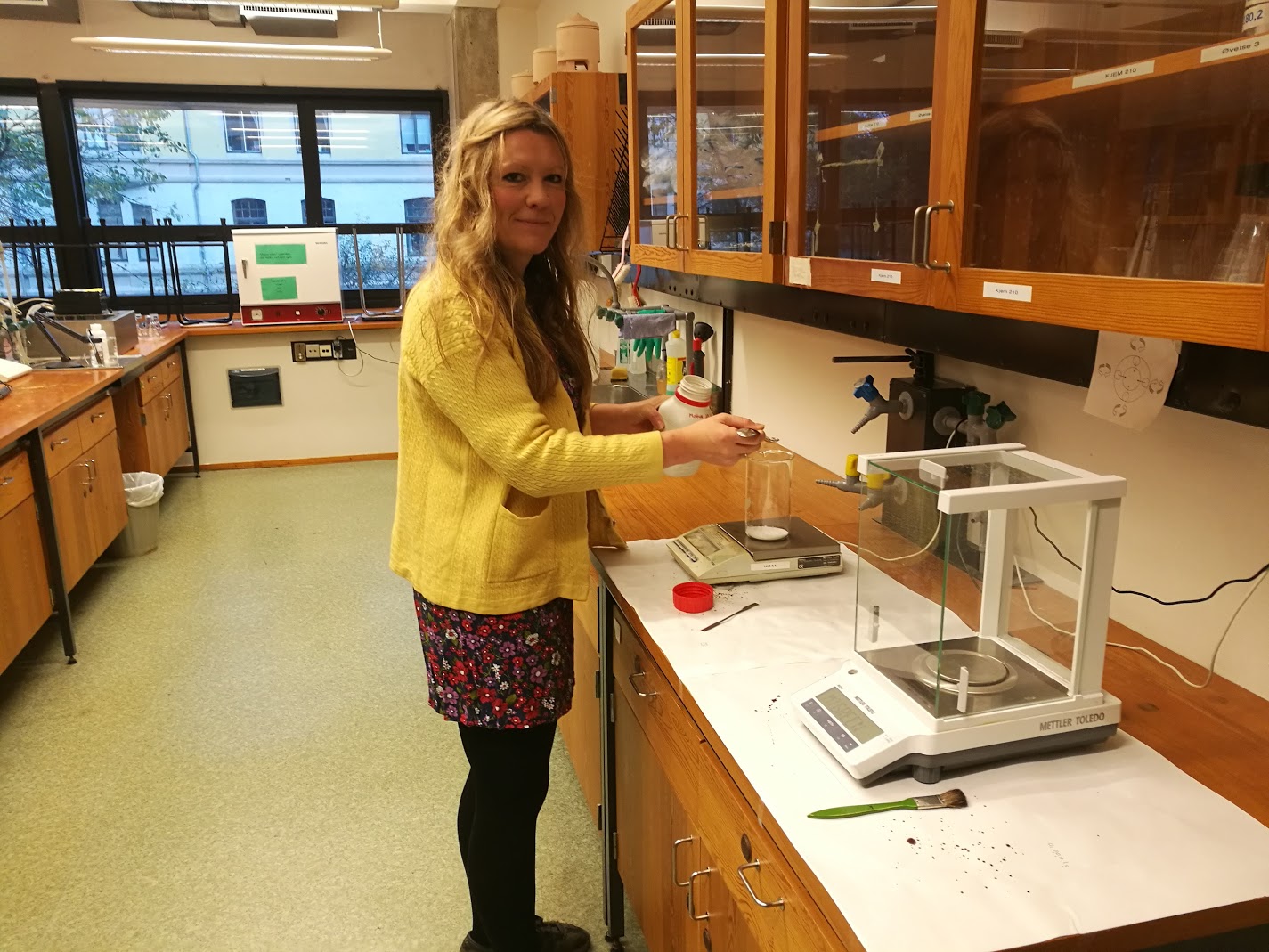Art and Chemistry

While some may think that hard science and art are separate entities, sometimes their paths converge. Angela Davies is a British artist working with sculptures, installations and performance. She combines elements of robotics, light, glass – and even chemistry. She is currently a residing artist at the S12 Gallery here in Bergen, where she will open an exhibition on November 17th. As part of this exhibition she needed help to make a stormglass, which is a sealed glass container containing various salts and organic compounds. The stormglass is a 19th century invention which supposedly predicts the weather! To quote admiral Robert FitzRoy (the captain of Darwin’s most famous exhibition), one of the early advocates of this instrument: «Since 1825 we have generally had some of these vials…when it was fairly demonstrated that if fixed, undisturbed, in free air, not exposed to radiation, fire, or sun, but in the ordinary light of a well-ventilated room, or preferably in the outer air, the chemical mixture in a so-called storm glass varies in character with the direction of the wind — not its force… though it may so vary from another cause, electrical tension. As the atmospheric current veers toward, comes from, or is only approaching from the polar direction, this chemical mixture — if closely, even microscopically watched — is found to grow like fir, or fern leaves — or like hoar frost — or even large but delicate crystallisations…» (The Weather Book, Fitzroy, 1863) The good admiral later went on to invent the phrase ‘weather forecast’ and founded what these days is known as the Met Office, so maybe we should trust his words?
If the liquid in the glass is clear, the weather will be bright and clear.
If the liquid is cloudy, the weather will be cloudy as well, perhaps with precipitation.
If there are small dots in the liquid, humid or foggy weather can be expected.
A cloudy glass with small stars indicates thunderstorms.
If the liquid contains small stars on sunny winter days, then snow is coming.
If there are large flakes throughout the liquid, it will be overcast in temperate seasons or snowy in the winter.
If there are crystals at the bottom, this indicates frost.
If there are threads near the top, it will be windy.
A group of Japanese killjoys ( Tanaka et al 2008: Pattern formation of crystals in storm glass. Journal of Crystal Growth. 310, 2668–2672) concluded that the only factor influencing the stormglass crystals is temperature. Be that as it may, our Welsh visitor wanted to use stormglasses in her exhibition due to their visual appeal and asked for our help. We could of course not refuse such a request, so under proper supervision she prepared her stormglass on a windy October morning. The exhibition will be on display at S12 gallery until next year, so go and have a look! (Text & Photo: BG)